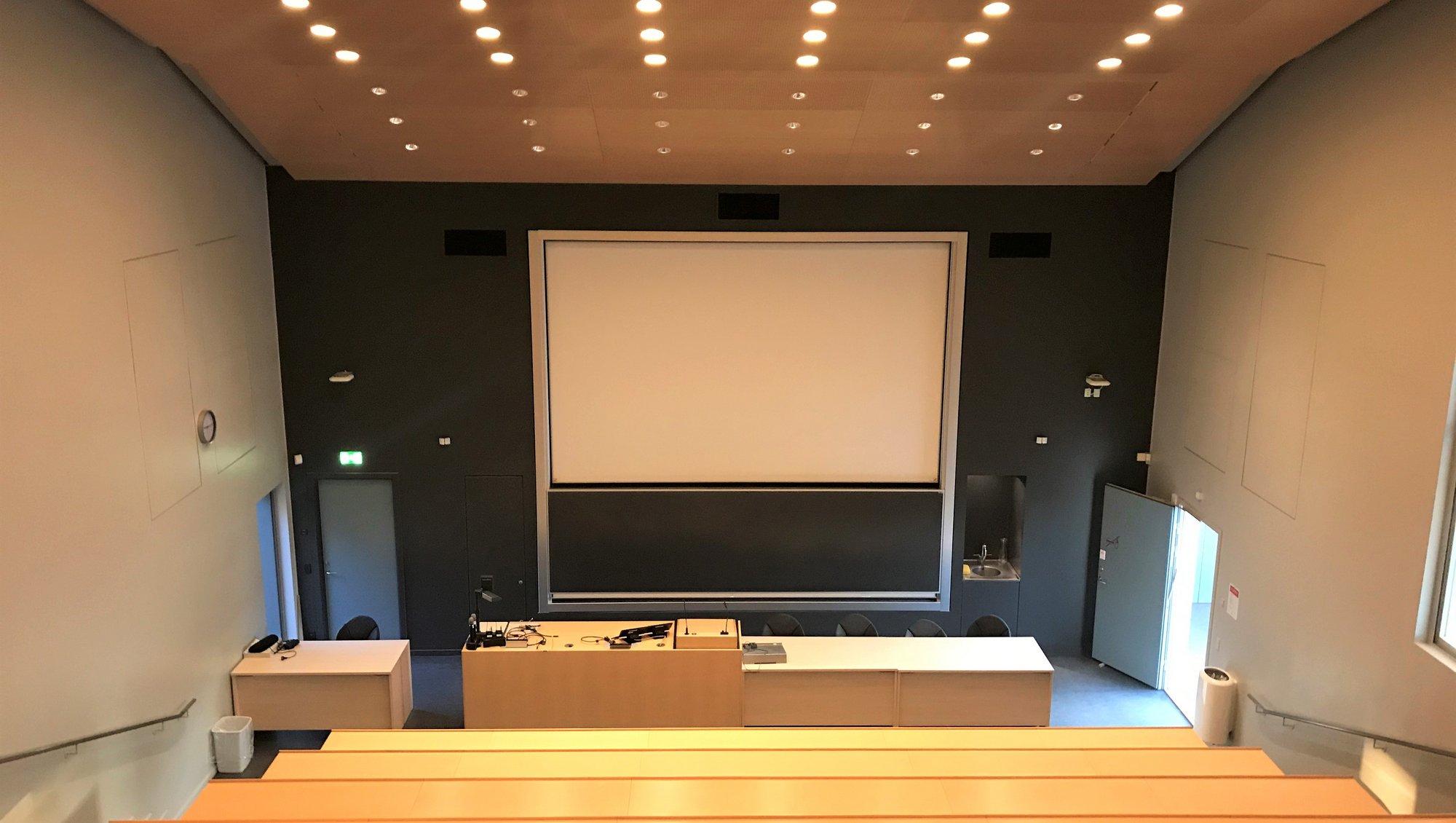New rules for study progress provide increased flexibility for students
Compulsory registration for exams will be abolished, and maximum time to degree will be introduced. The senior management team has adopted joint rules which specify how the new act on study progress is to be administered in practice at AU. The faculties will now start to clarify how to apply the rules in practice on the individual degree programmes.
Since autumn, AU has worked to prepare rules which specify how adjustments to the study progress reform are to be implemented to include the flexibility which is provided by the new act on study progress. The adopted rules on study progress at AU were sent to the boards of studies, the studies administration offices and student organisations for comments, and these comments have been included to the extent possible.
The pro-rector for education at Aarhus University, Berit Eika explains.
‘The rules are based on a balance of how we can provide as much flexibility as possible for the students to plan their studies and at the same time provide the best framework to ensure that students complete their studies in a good way, and that we maintain degree programme quality.’
One of the key elements in the recently adopted rules is the abolition of the compulsory registration for all courses and exams. Berit Eika says:
‘By removing the compulsory registration for courses and exams, we give students a higher degree of flexibility. Therefore, we now look forward to spending time and money on something other than compulsory registration for courses and exams which many students stay away from. We would rather spend this time and money on ensuring a good degree programme quality.’
Students must get there on time
Another key element in the new model is the active enrolment requirement. The active enrolment requirement means that the student must pass at least 45 ECTS per academic year (one academic year is equivalent to 60 ECTS). In addition, the students must observe the rules regarding maximum time to degree. Maximum time to degree means that Bachelor students must complete their degree programme within the prescribed study period plus six to twelve months, whereas Master’s degree students must complete their degree programme within the prescribed study period plus maximum six months.
Pro-rector Berit Eika elaborates:
‘The active enrolment requirement and the maximum time to degree are important elements which the students must be aware of. If we compare the degree programme to a trip in a car, the students will not reach their destination, if they drive at minimum speed all the way through their degree programme, because the maximum time to degree determines when they must have completed their degree programme at the latest. In order to avoid this, the new rules are accompanied by targeted student guidance initiatives for the students who need this the most.’
Implementation of the model
It is still a general set of rules which has just been adopted. During the coming months, the faculties will decide how to handle the new rules, and the academic regulations will be adjusted. How this will affect the individual degree programme will therefore be decided at the faculty in the near future.
‘The work to implement the rules has the highest priority right now, so it will be possible for us to clarify the rules’ impact on the individual degree programme and on the individual student at AU as quickly as possible. All students will receive more detailed information about the influence these rules will have on their degree programme as detailed decisions are made and implemented before the next semester starts,’ says Berit Eika.
The purpose of the new rules, which include a differentiated model for Bachelor’s degree programmes and Master’s degree programmes respectively, is to ensure the least intrusive approach to students at the university. You can read the rules here:
Facts: Changes to rules on study progress
For Bachelor’s degree programmes:
- The compulsory registration for all courses and exams (equivalent to 60 ECTS per academic year) will be abolished, and in future, Bachelor students are responsible for registering for and/or withdrawing from courses as well as exams within a specified deadline.
- An active enrolment requirement of 45 ECTS per academic year will be introduced. If the first-year exam is equivalent to 45 ECTS or more, the active enrolment requirement for the first year of the Bachelor’s degree programme will no longer apply. The active enrolment requirement is cumulative. This means by default that students must have earned 45 ECTS credits after the first year of study, 90 after the second year, and so on.
- Bachelor’s degree students must complete their degree programme within the prescribed study period plus six to twelve months. There will be differences from one degree programme to the next and information can be found in the academic regulations.
- Each faculty establishes a first-year exam for Bachelor students equivalent to between 30 and 60 ECTS ( the number of ECTS is determined by the faculty) which must be passed before the end of the first academic year.
For Master’s degree programmes:
- The compulsory registration for courses and exams (equivalent to 60 ECTS per academic year) will be abolished, and in future, Master’s degree students will be responsible for registering for and/or withdrawing from courses as well as exams within a specified deadline.
- However, the student will automatically be registered for his/her Master’s thesis at the time when it is still possible for the student to use three attempts in connection with his/her thesis within the maximum time to degree time frame.
- Master’s degree students must pass at least 45 ECTS per academic year. The active enrolment requirement is cumulative. This means by default that students must have earned 45 ECTS credits after the first year of study, 90 after the second year, and so on.
- Master’s degree students must complete their degree programme within the prescribed study period plus 6 months. It is possible to complete failed courses in parallel with the Master’s thesis within the framework of the active enrolment requirement and the maximum time to degree.
On the basis of an application, it will still be possible to get an exemption to deviate from the rules in case of exceptional circumstances.
Facts about the study progress reform
The reform was adopted in 2013 with the purpose of reducing the delays in time to degree in connection with higher education degree programmes and thereby contributing to growth and prosperity in Denmark. The reform requires that all universities in Denmark reduce their average time to degree up until 2020 - if not, they will receive less funding. At AU, these rules mean that the average time to degree must be reduced by 4.7 months. If this does not happen, AU will face a fine of up to DKK 240 million.
In autumn 2015, a political agreement was made to adjust the study progress reform. The adjustment gives more flexibility for the universities to decide how to reach the goal of reducing the time to degree.
Further information
-
Read more about study progress at the website for staff and for students
The adoption of internal rules for study progress for the professional Bachelor's degree programmes is waiting for clarification regarding possible changes to the ministerial order.
- On 12 May, heads of studies administration, deputy directors and managers from the administration will meet to initiate the process towards final implementation of the new study progress rules on 1 September 2016.












































